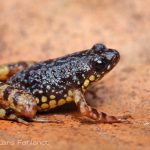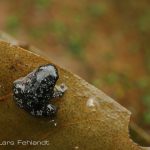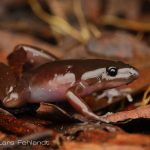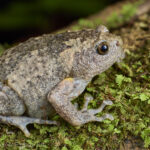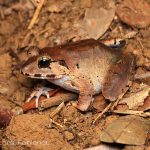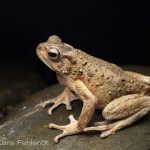Saffron-bellied frog, Chaperina fusca Mocquard, 1892 – at an illegal waste dumping site in Kuching, south Sarawak / Borneo / Lowland 60m ASL
Chaperina fusca is a small species of narrow-mouthed frog (family Microhylidae) and the only representative of the genus Chaperina. The species inhabits the warm, humid lowlands of Southeast Asia, occurring on the Malay Peninsula, Borneo, and some Philippine islands. Adult animals reach a length of just over two centimeters. The back is dark in color, while the belly is characteristically black with yellowish to orange, net-like markings; the eardrum is barely visible, and there are small, thorn-like protrusions on the elbows and heels. The call is a short, insect-like buzzing sound.
Ecologically, C. fusca is adapted to the ground and leaf litter areas of moist primary and secondary forests, but is also found in disturbed habitats, including gardens. Reproduction takes place in very small, temporary bodies of water; both natural micro-water bodies (such as water-filled tree structures) and artificial containers are used. The use of discarded cans, tires, and other water-holding containers as spawning grounds has been documented. Accordingly, the species can also colonize urban peripheral areas, especially where wild garbage dumps provide such improvised micro-water bodies. The global threat status is listed as “not endangered” (Least Concern); however, large-scale habitat loss due to deforestation and pollution are still considered relevant regional risks.
